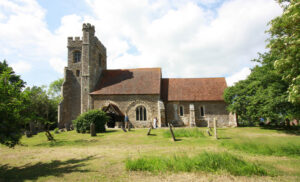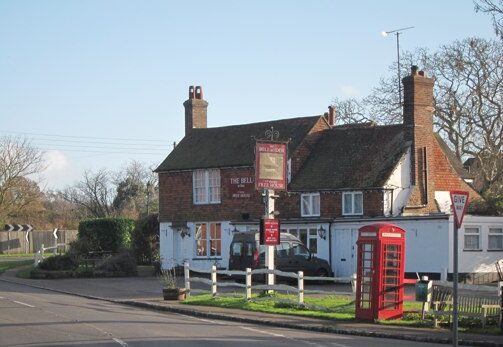Just about three miles from Rye is the historic settlement of Iden. The name, in Old English, means “from the marshland pasture”, and as well as the village, has been used by several families. In the Middle Ages, a personal name was often taken from the area with which the holder was associated. (Montagu, for instance, comes from Monte acuto, a pointed hill, in our case, coming to England from what is now Savoy, in the ninth century.)
A family called Iden lived locally for about 200 years. Alexander Iden was responsible for catching and killing Jack Cade, who between April and July 1450 led an anti government rebellion in the south east, aimed at the abuse of power by friends and officials of King Henry VI, poor national administration and the unsuccessful fighting with France. They reached London Bridge, where a battle was fought. The king offered a pardon in return for an end to the fighting and Cade fled towards Lewes. Alexander Iden caught him, with the intention of returning him to London to face a trial. However, a fight took place and Cade died. To act as a deterrent to others, his corpse was put on trial, found guilty and beheaded. His remains were then cut into four pieces and sent to be exhibited around the country – a grisly reminder of what happened to those who rebelled.

Iden is recorded in the Domesday Book of 1086, when it is shown to have contained just eight households, which means that it was one of the smallest settlements in the country.
There were two ploughlands and two plough teams belonging to the Lord of the Manor, who in 1086 was Count Robert of Eu. At the time of the conquest in 1066 it had belonged to Ednoth of Playden. The income provided to both lords, 20 years apart, was the same, a rather niggardly one pound and ten shillings. Possibly not the most valuable of their possessions!
The Bell at Iden must surely rank as one of the oldest inns in the country, with its roots firmly in the 12th century, possibly as early as 1107. It has been suggested that the building was used a place for brewing beer by monks.

The other surviving venerable building is the church of All Saints, like the Bell, founded in the early 12th century. Later in the same century, side aisles and a tower were added, with the chancel following in the next century. Two hundred years later the church was rebuilt when a taller tower was added, the north aisle rebuilt and a chapel added. Early in the 16th century the south aisle was demolished. On the outside of the north wall, so obviously not its original location, is a rare mediaeval mass dial. These were in use from about the 11th to mid 16th century, and were placed on the south side of the church, to catch what sun there was. It is supposed that they were used to show the times for mass, before clocks became commonplace. The church’s real claim to fame seems to be the longevity of its incumbents. The Guinness Book of Records tells us that in the 117 years between 1807 and 1924, there were but two. In 1872, the church was described as “recently in disrepair”, whilst the living was worth £753 a year.
Iden was once the site of a castellated, moated manor house, which, it is said, could rival Bodiam castle with its splendour. All that survives now, at least above ground, is the shape of the moat and a small piece of a gatehouse. It was built for Sir Edmund de Passeley in 1284 and known as The Manor of Moat or just La Mote. Then it seems to have just been a large house, but that changed in 1318, when de Passeley received from King Edward II a Licence to Crenellate – in effect to turn it into a fortified castle. Then, just like at Bodiam, a large lake was dug, with the building on an island in the middle.
Image Credits: Geograph , Geograph CC .




There were five remarkable Rectors of Iden who followed each other between 1807 and 1977 and as mentioned, two earned an entry in the Guinness book of Records
The first was also Mayor of Rye and a shrewd and quite ruthless political operator, the next a wealthy City Financier who funded the North American Railway and inter alia was one of the founders of Rye Golf club, then an athlete who held world records and played cricket for Kent, followed by an eccentric who wrote a notorious book the Church tried to ban and finally a very successful and renowned art dealer whose picture sales are now in leading Galleries around the world.
I am currently writing a brief history of these fascinating men and whilst it may not be a best seller, I can guarantee it will be a good read